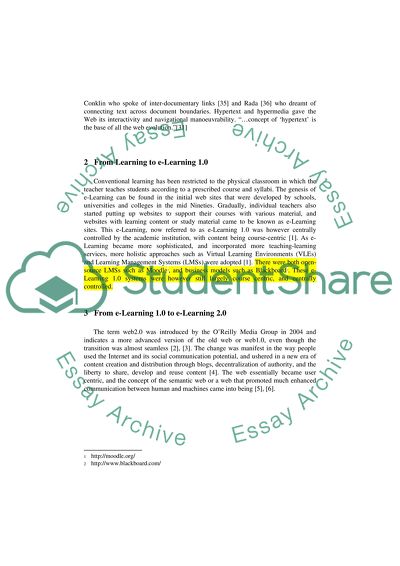Cite this document
(When Learning Never Stops - From Learning to Lifelong Learning, Over e-Learning Essay Example | Topics and Well Written Essays - 1500 words, n.d.)
When Learning Never Stops - From Learning to Lifelong Learning, Over e-Learning Essay Example | Topics and Well Written Essays - 1500 words. https://studentshare.org/education/1560968-how-the-web-change-learning-over-e-learning-to-lifelong-learning
When Learning Never Stops - From Learning to Lifelong Learning, Over e-Learning Essay Example | Topics and Well Written Essays - 1500 words. https://studentshare.org/education/1560968-how-the-web-change-learning-over-e-learning-to-lifelong-learning
(When Learning Never Stops - From Learning to Lifelong Learning, Over E-Learning Essay Example | Topics and Well Written Essays - 1500 Words)
When Learning Never Stops - From Learning to Lifelong Learning, Over E-Learning Essay Example | Topics and Well Written Essays - 1500 Words. https://studentshare.org/education/1560968-how-the-web-change-learning-over-e-learning-to-lifelong-learning.
When Learning Never Stops - From Learning to Lifelong Learning, Over E-Learning Essay Example | Topics and Well Written Essays - 1500 Words. https://studentshare.org/education/1560968-how-the-web-change-learning-over-e-learning-to-lifelong-learning.
“When Learning Never Stops - From Learning to Lifelong Learning, Over E-Learning Essay Example | Topics and Well Written Essays - 1500 Words”. https://studentshare.org/education/1560968-how-the-web-change-learning-over-e-learning-to-lifelong-learning.


